MONOHYBRID AND DIHYBRID CROSS
INTRODUCTION:
LIKE BEGETS LIKE, which means young one resemble their parents, (MONOHYBRID CROSS & DIHYBRID CROSS) is the well-known dogma associated with heredity. Each species has similarities among themselves due to the cause of heredity. W.Bateson was the first one to coin the term genetics in 1905. It is derived from the greek word “genesis” means to grow into or to become . in other word, genetics is the study of heredity and variation.
SOME IMPORTANT TERMS RELATED TO GENETICS ( MONOHYBRID CROSS & DIHYBRID CROSS)
- HEREDITY: It is the process to transmit characteristics from progeny to progeny.
- GENES: Genes are units of heredity present on the chromosomes. Each gene is the specific segment of DNA and, when activated, encodes specific characteristics of an organism.
- GENETICS: It is the branch of biology, which deals with the study of the transmission of similarities and differences from the parents to their offsprings.
- ALLELES or ALLELOMORPHS: These are two alternative forms of same gene and occupy the corresponding loci or position on the homologous chromosomes. T and t are alleles for tallness and dwarfness of heights of the plant respectively.
- HOMOZYGOUS: An organism having alleles for same phenotypic expression, e.g. TT are the homozygous allele for tall plant; tt are the homozygous allele for the dwarf plant. It is genetically pure for that character.
- HETEROZYGOUS: An organism in which two alleles of a gene regulate different phenotypic expression of same character is called heterozygous e.g. Tt condition for height of the plant. The organism is called genetically hybrid for that characters.
- DOMINANT: In heterozygous condition (Tt) the allele which masks the expression of other allele and expresses itself, is called dominant. In Tt condition, T (allele for tallness) expresses itself.
- RECESSIVE: In heterozygous condition, the allele whose expression is masked by dominant allele, is called recessive e.g. in Tt condition, t (allele for dwarfness) is recessive.
- PHENOTYPE: The physical expression of a character is called phenotype e.g. phenotypic expression of allele T is tallness.
- GENOTYPE: The genetic make up of a character is called its genotype e.g. TT for homozygous tallness and Tt for heterozygous
- GENE POOL: The genotype of all the organisms of of a species are collectively called gene pool of that species.
- MONOHYBRID CROSS : A cross-breeding experiment in which only one allelic pair of the parents is considered, is called monohybrid cross g. a cross between pure tall (TT) and pure dwarf (tt) pea plant.
- DIHYBRID CROSS: A cross-breeding experiment in which two alleleic pairs of the parents are considered is called dihybrid cross. E.g. a cross between pure yellow and round seeded pea plant and pure green and wrinklrd seeded pea plant.
- P GENERATION: Individuals with which a cross-breeding experiment is started, collectively form P generation.
- F1GENERATION or FIRST FILIAL GENERATION: Offsprings of individuals of P generation collectively form F1
- F2GENERATION or SECOND FILIAL GENERATION: Offsprings produced by selfing or self-pollination of F1 individuals collectively form F2
- MUTATION: These are sudden and large inheritable changes in the genetic material. These produce variations in the populations so help in evolution. Sickle cell anaemia (RBC is become sickle shaped) is caused by recessive gene mutation.
- VARIATION: The structural, functional and behavioural changes from the normal characters of the organisms are called variations. These act as raw materials for evolution. Variations are commonly seen in various races of human beings and even members of a population as well as a family.
MENDEL: THE FOUNDER OF GENETICS
Gregor Mendel was a monk in an Austrian monastery; he was not biologist by profession.Mendel was born in 1802 to peasant parents and went to live in the Augustinian monastery ( now in Czechoslovakia) in 1843. In 1851 knowing his abilities, he was sent to the University of Vienna for two years to study science and mathematics. Mendel had choosen 7 different characters from various pea plants about 34 varietis of garden pea ( Pisum sativum) . He experimented near about 7 years and published all his results in the Natural History Society of Brumm of 1865: but it came in front of public in 1866 but not got popularity and attention till 1900. His work got known after his death when three scientists, De Vries in Holland, Correns in Germany and Tschermark in Austria, rediscovered his work and began to make use of his finding.
EXPERIMENTAL PLANT: Mendel did his experiments on garden pea plant (Pisum sativum), he choosen the garden pea plant,due to following reasons:
- DISTINCT VARIETIES: Pea plants have several distinct varieties which have sharp contrasting characteristics such as colour and shape of seeds.
- BISEXUAL FLOWERS: Pea plants bear bisexual flowers with each flower having both the male and female parts.
- PURE LINES FOR SEVERAL GENERATIONS: In pea plant due to self-fertilization, it is easy to get pure lines of generation.
- ANNUAL PLANT: Pea plants are annual plants so it is possible to study several generation within a short span of time.
- SIZE OF PEA FLOWERS: The flowers of pea plants are adequate in size and easy t to handle.
- SEED PRODUCTION: Each plant can produce large number of seeds in a single generation.
SEVEN PAIRS OF CONTRASTING CHARACTERS ( MONOHYBRID CROSS & DIHYBRID CROSS)
| CHARACTERISTICS | DOMINANT EXPRESSION | RECESSIVE EXPRESSION |
| (i)Plant size | TALL
|
DWARF
|
| (ii)Fruit / Pod colour | GREEN
|
YELLOW
|
| (iii)Fruit/ Pod shape | INFLATED
|
WRINKLED (CONSTRICTED)
|
| (iv) Shape of the seed | ROUND (SMOOTH)
|
WRINKLED (CONSTRICTED)
|
| (v) Colour of the seed | YELLOW COTYLEDON
|
GREEN COTYLEDON
|
| (vi) Flower colour | PURPLE (VIOLET)
|
WHITE
|
| (viii) Flower position | AXIAL POSITION
|
TERMINAL ON THE STEM
|
MENDEL’S MONOHYBRID CROSS: ( MONOHYBRID CROSS & DIHYBRID CROSS)
This experiment was conducted in three stages.
- He selected the pure breeding individuals for P generation which differed in only one phenotypic expression.
- He cross-bred the individuals of P generation and obtained F1 He counted the number of different phenotypes observed in F1generation.
- F1 plants were allowed to self-pollinate to produce F2 He counted the number of different phenotypes observed in F2 generation.
P generation: Pure tall plant X Pure dwarf plant
Genotype: (TT) X (tt)
Gametes: (T) (T) X (t) (t)
F1 generation: (Tt)
Hybrid tall
self pollination of F1plants
Self-pollination: ( Tt) X (Tt)
Gamete: (T) (t) X (T) (t)
F2:
| T | t | |
| T | TT (PURE TALL) | Tt( HYBRID TALL) |
| t | Tt( HYBRID TALL) | Tt (PURE TALL |
F2 Genotypic ratio: 1 TT : 2 Tt : 1 tt
1:2:1
F2 Phenotypic ratio: tall : dwarf :: 3:1
CONCLUSION: Mendel proposed following three principles of inheritance after the analysis of monohybrid cross.
- Law of Dominance
- Law of Segregation
- Law of Independent Assortment
- The law of Dominance: Various hereditary characteristics or traits are controlled by factors (gene) which occurs in pairs. Out of these only one factors expresses itself in the F1 The character or factor which is seen or expressed is called dominant and the character which one is hidden or latent as recessive.
- The law of segregation: It states that allelic pair (now genes) separate or segregrate individually during formation of gametes and the paired structure is brought back by the fusion of gametes randomly of gametes during fusion or
- The law of Independent Assortment: It states that when a dihybrid organism forms gametes, each gamete receives one allele from each allele pair ( or each characteristics) and the combination of alleles (now genes) of various characteristics or speciality is completely independent or free their parental combination during formation of gametes.
DIHYBRID CROSS
For example, two plants differing in two characters like seed shape ( round and wrinkled) and cotyledon colour ( yellow and green) were crossed together.
- Mendel selected a pure or homozygous dominant variety of pea plant for yellow round (YYRR) and another homozygous recessive variety of green wrinkled (yyrr) He made cross between these plants and observed that all F1 generation seeds had the features of only one type (yellow and round shape seed). This result reveals that yellow seed colour was dominant over green colour of seed which is a recessive or non-expressive characteristics and round shape of seed was dominant or expressable over wrinkled seed shape.
- Mendel did selfing or self-pollination of these F 1 hybrids . When these F1 generation seeds were cross-bred to raise the F2generation, the F2 progeny showed four different kinds of phenotypes of seeds. It was observed that not only both the parental types (round seeds of yellow colour and wrinkled seeds of green colour) were present, but also new combination of traits ( round seeds of green colour and wrinkled seeds of yellow colour) also appeared.
- Thus, there were yellow round, yellow wrinkled, green round and green wrinkled seeds in the ratio of 9:3:3:1 respectively, of these, two are of the parental (P) types and two are new combinations or recombinants. Dihybrid cross is represented here.
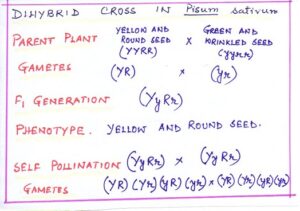
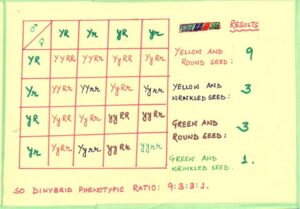

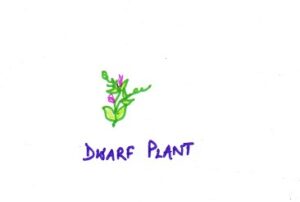
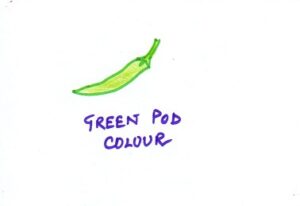
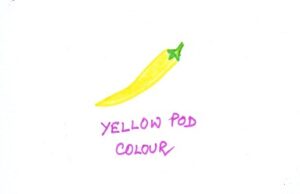
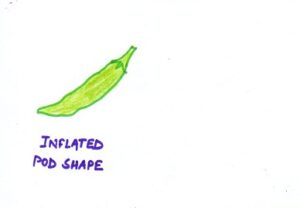
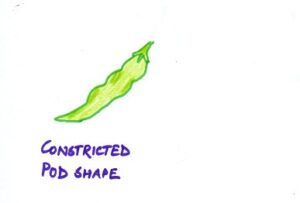
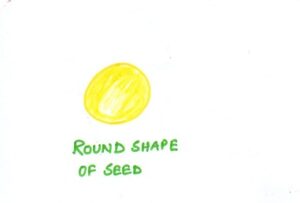
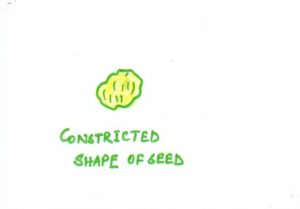
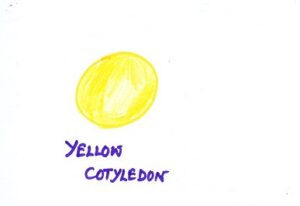
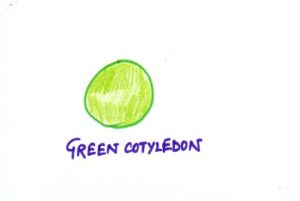
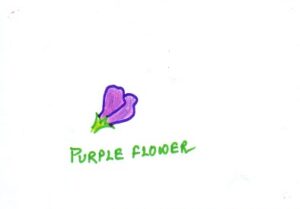
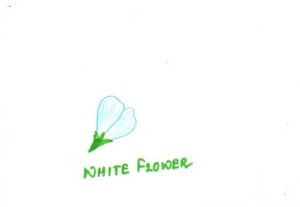
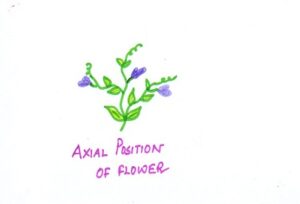
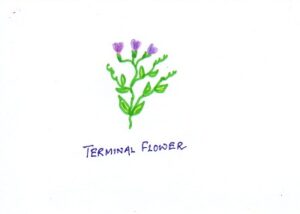
very good post, i certainly enjoy this fabulous website, go on it